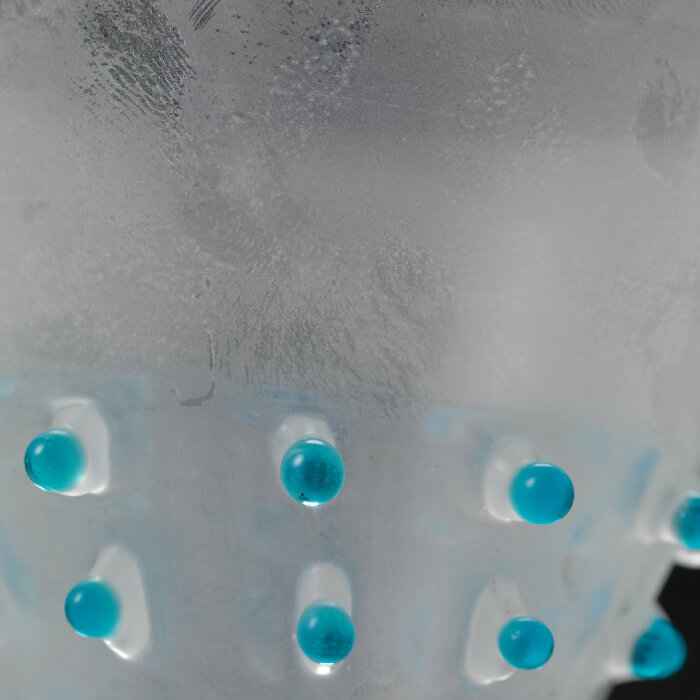Dealing with the chemical deterioration of glass in museum collections is a serious challenge for conservators and curators. It has been estimated that up to 30 percent of all glass objects in museums may be of unstable composition, but the associated visual changes cannot always be observed. Conservators asked me if it would be possible to identify unstable glass objects, before the irreversible changes occur.

In my research I therefore aim to identify unstable glass at an early stage using analytical techniques, before the damage is done. The project I am currently working on is a collaboration between three partners: the Rijksmuseum, the Corning Museum of Glass and the University of Texas at Dallas.
The deterioration patterns observed in historic glass are associated with an ion-exchange process that occurs when the glass comes into contact with water. This includes atmospheric water, so relative humidity is a crucial parameter for unstable glass storage. During the deterioration process, cations leach out of the glass network and are replaced by hydrogen ions. The leached ions can subsequently react with atmospheric molecules and form new compounds on the surface of the glass. We use ion chromatography (IC) to quantify the ions present on the surface of the glass and use that data to predict glass stability and develop guidelines for storage climate.
To allow IC, the ions need to be sampled from the glass surface and brought into solution. The sampling method needed to be straightforward, to enable investigations of large glass collections, so we used a simple swabbing protocol to remove the ions from the surface of the glass. During the development and validation of the protocol – using dummy samples with inert surfaces – we obtained highly reproducible results. However, reproducibility dipped significantly once the technique was applied to real deteriorated glass surfaces. We are currently carrying out experiments to better understand whether this is a result of flaws in the analytical protocol, or if it is an intrinsic phenomenon related to the level of deterioration products on the glass itself.
Although the reproducibility of the protocol could be improved, we obtained exciting results when studying museum collections. Using IC, we were clearly able to discriminate between unstable and stable glass in museum collections, even though no clear signs of deterioration could be observed – our analytical data made the invisible visible.
The next step is to establish conclusively whether the presence of ions on glass surfaces is a direct result of glass deterioration. In collaboration with the National Institute of Chemistry in Slovenia, we have used laser ablation-inductively coupled plasma-MS for quantification of changes in the glass composition and in a later stage we will use SIMS to measure the extent of cation leaching to improve our understanding of the chemical decay of glass in museum collections.
Ultimately, the goal of our research is to support the curatorial community in making evidence-based decisions about the conservation of glass objects in museum collections and prioritizing (often costly) conservation treatments. As the work continues the collaboration between scientist, conservators, curators and collection managers is crucial. I often find that colleagues who don’t have an analytical background find it difficult to translate of scientific analysis into daily practice. Because my project started with a practical question from a conservator, I always try to provide practical implications of the research.




